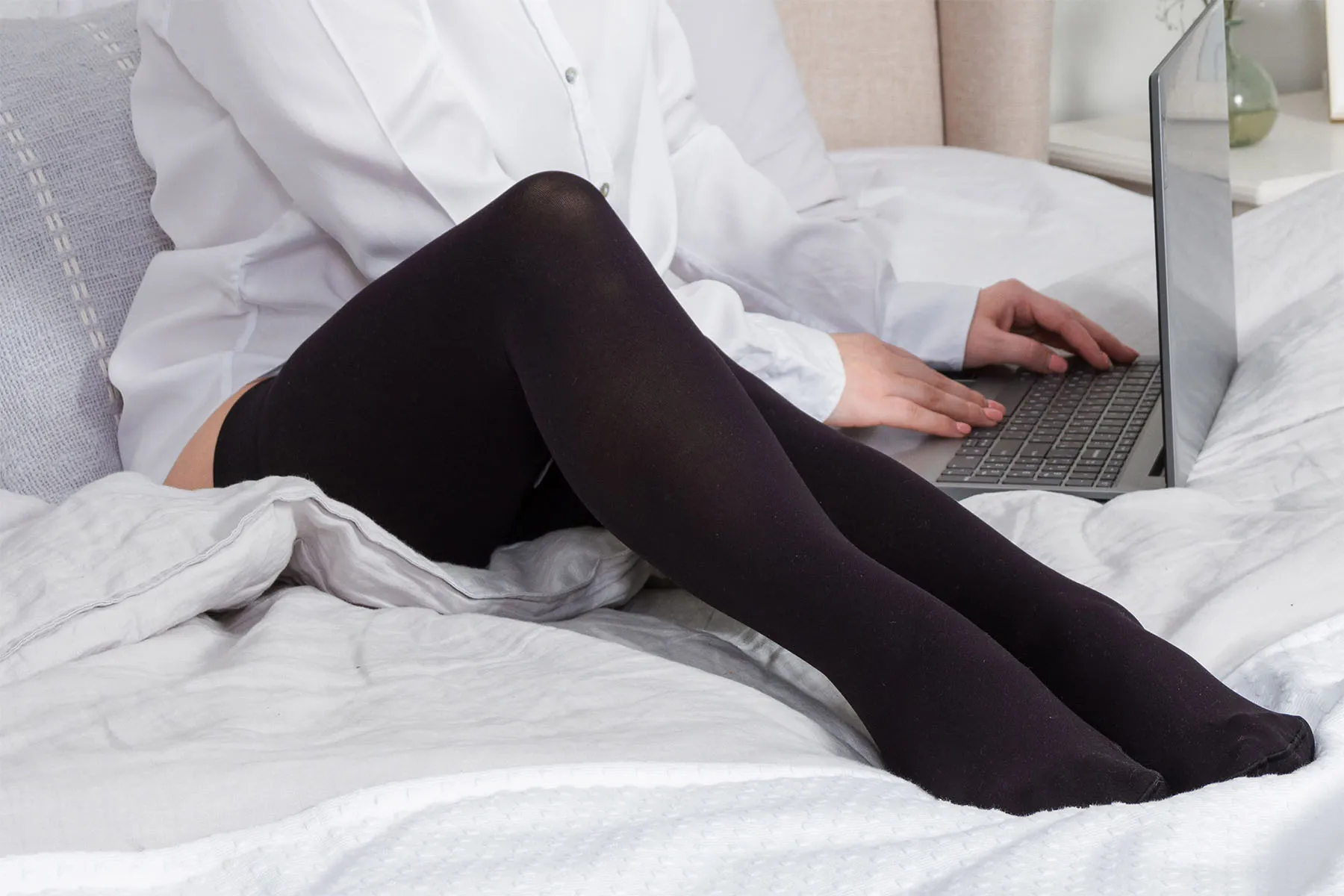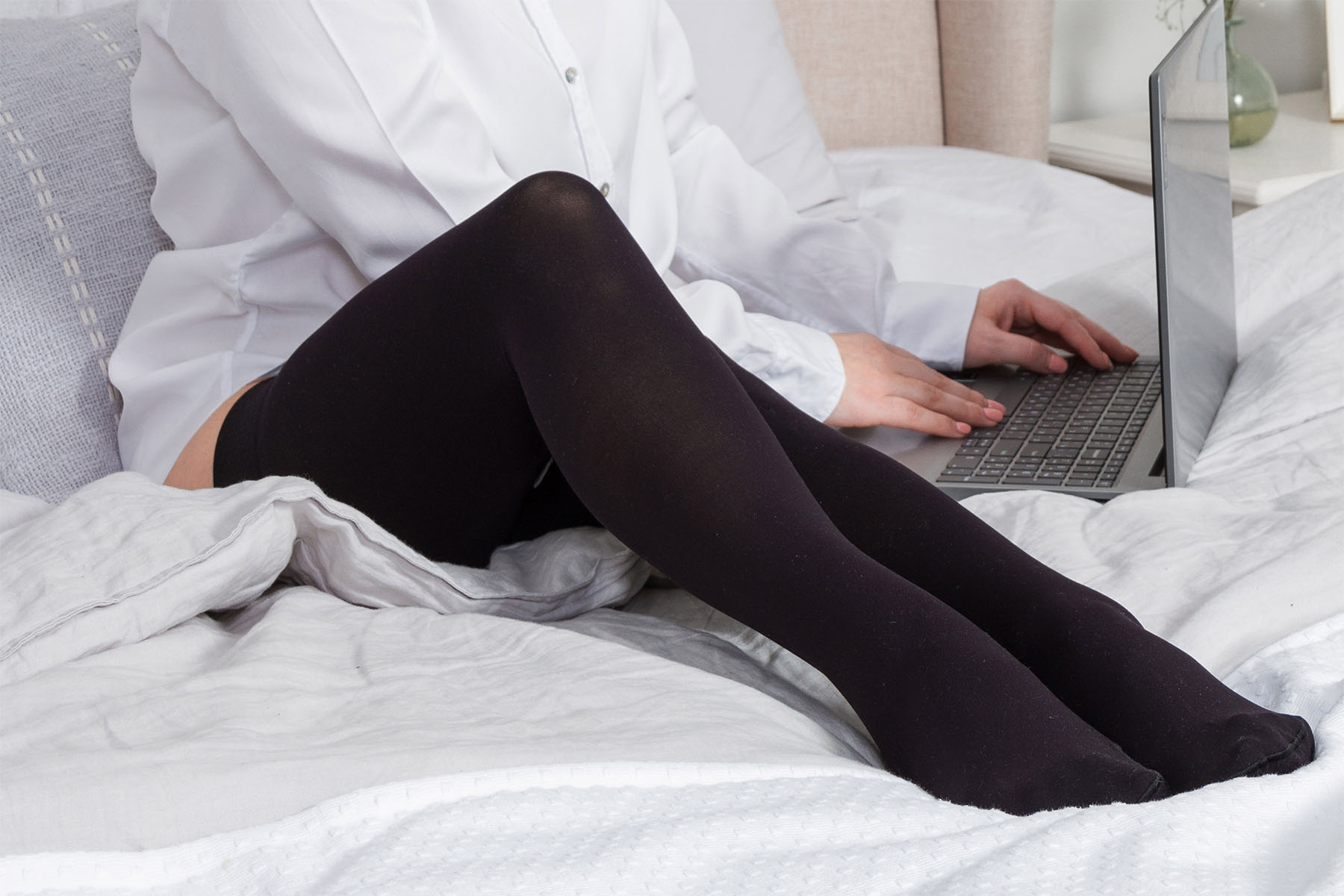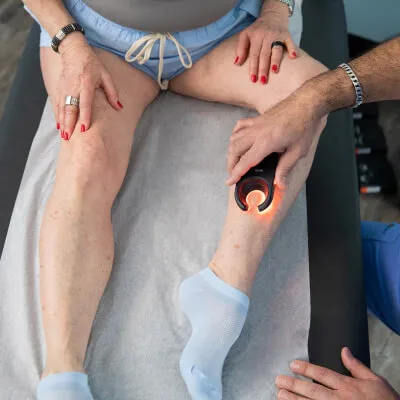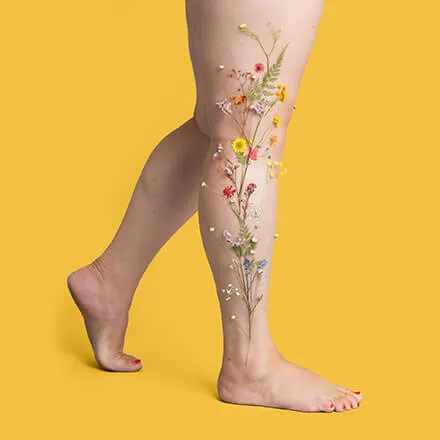Compression stockings are more than snug-fitting socks. They help reduce uncomfortable swelling and pain associated with injuries and certain medical conditions. They also help people avoid sports injuries, pressure ulcers, and blood clots, which can be particularly dangerous.
With numerous compression stockings available, selecting the right one is crucial to reaping its benefits.
We've created this useful guide to help you make the right choice. Here, you'll discover how compression stockings work, how to select the right one for your condition, and how to care for them. You'll also learn how to wear your compression stockings correctly and how to recognize if they are a bad fit.
How Compression Stockings Work
Compression stockings, also called support hosiery, add a controlled amount of pressure to your legs. This action improves blood flow through various veins in the leg, reducing the risk of blood clots and other complications of poor blood circulation. However, not all compression stockings are created equal.
Some compression stockings apply the same amount of pressure from the bottom of the leg to the top. Others, called graduated compression stockings (GCS), apply graded pressure at different points of the leg. The graduated nature of these stockings allows them to apply more pressure at the bottom of the leg, gradually releasing that pressure towards the top. This is why graduated compression stockings are tighter around the ankle and looser at the top.
Overall, graduated compression helps to move blood from the legs to the upper body faster, pumping more blood into the heart. Though all compression stockings, by design, apply pressure on the legs and ankles, moving blood away from the feet and improving circulation in the legs, graduated compression reduces the risk of inflammation and blood clots.
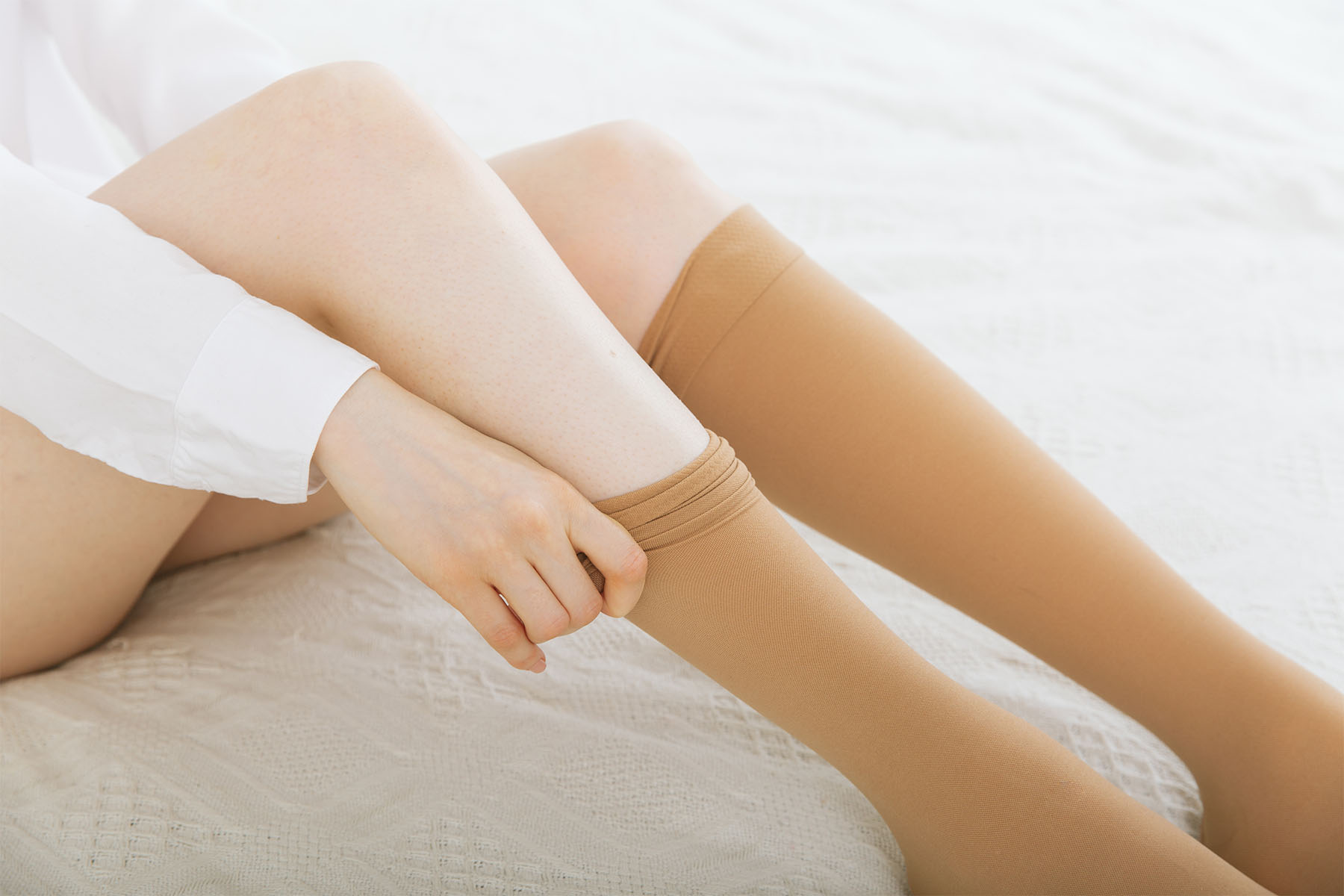
Benefits of Compression Stockings
Compression stockings, sometimes called compression socks, range from ankle-high to waist-high, each offering benefits and levels of comfort for the wearer.
Medical Benefits
Many individuals wear compression stockings for medical benefits. These benefits include, but aren't limited to, the following.
Reducing Leg Swelling from Edema and Inflammation
Leg swelling is caused by inflammation and fluid retention (edema). The latter occurs when someone is inactive for a long period, has developed side effects from certain medications, has an injury to their leg, or has certain medical conditions.
Compression stockings can reduce the amount of fluid in your leg by moving it towards the upper body. They can also reduce inflammation by improving blood flow in the area.
Preventing and Managing Varicose Veins
Veins contain a valve that opens and closes to usher blood toward the heart. When the vein is injured, the valve fails to work correctly, causing blood to pool or flow away from the heart. This distorts the vein, creating a varicose vein.
Compression stockings can reduce the risk of varicose veins by adding just enough pressure to the area to keep blood flowing in the right direction. They may also treat the condition by reducing difficult symptoms such as swelling, pain, and heaviness in the area.
Lowering the Risk of Deep Vein Thrombosis (DVT)
Deep vein thrombosis occurs when a blood clot forms and blocks blood from flowing through a deep vein in the leg. This condition may occur as a result of sitting for too long, using certain medications, or having a family history of blood clots. If not treated promptly, it can lead to a pulmonary embolism (blood clots in the lungs). Having a history of a DVT can also increase your risk of leg ulcer formation, and venous insufficiency (damaged veins).
To prevent these risks, people often wear graded compression stockings. GCSs apply just enough pressure to help blood flow through the deep veins, even during periods of inactivity.
Helping to Heal Venous Ulcers
Venous ulcers, also called venous stasis ulcers, are wounds that appear on the leg due to poor circulation. They often stem from vein damage that causes deoxygenated blood to pool in the area. This leads to pressure and tissue damage, possibly resulting in an ulcer that doesn't heal without treatment.
Compression stockings are one form of treatment for venous ulcers. They improve circulation in the area, helping the ulcer heal. They are also useful in preventing the formation of venous ulcers by improving blood circulation.
Athletic Performance and Recovery
Athletes always aim to enhance their endurance and strength to excel in their sport and minimize the risk of injuries. In addition to stretching, attending regular practice sessions, and allowing for proper rest and recovery, the International Journal of Exercise Science suggests that some athletes enhance their performance by wearing compression garments, particularly compression socks.
Additional benefits athletes experience when wearing compression socks include:
- Improved circulation
- Improved muscle operation
- Reduced muscle fatigue
- Improved muscle recovery
- Improved post-exercise recovery
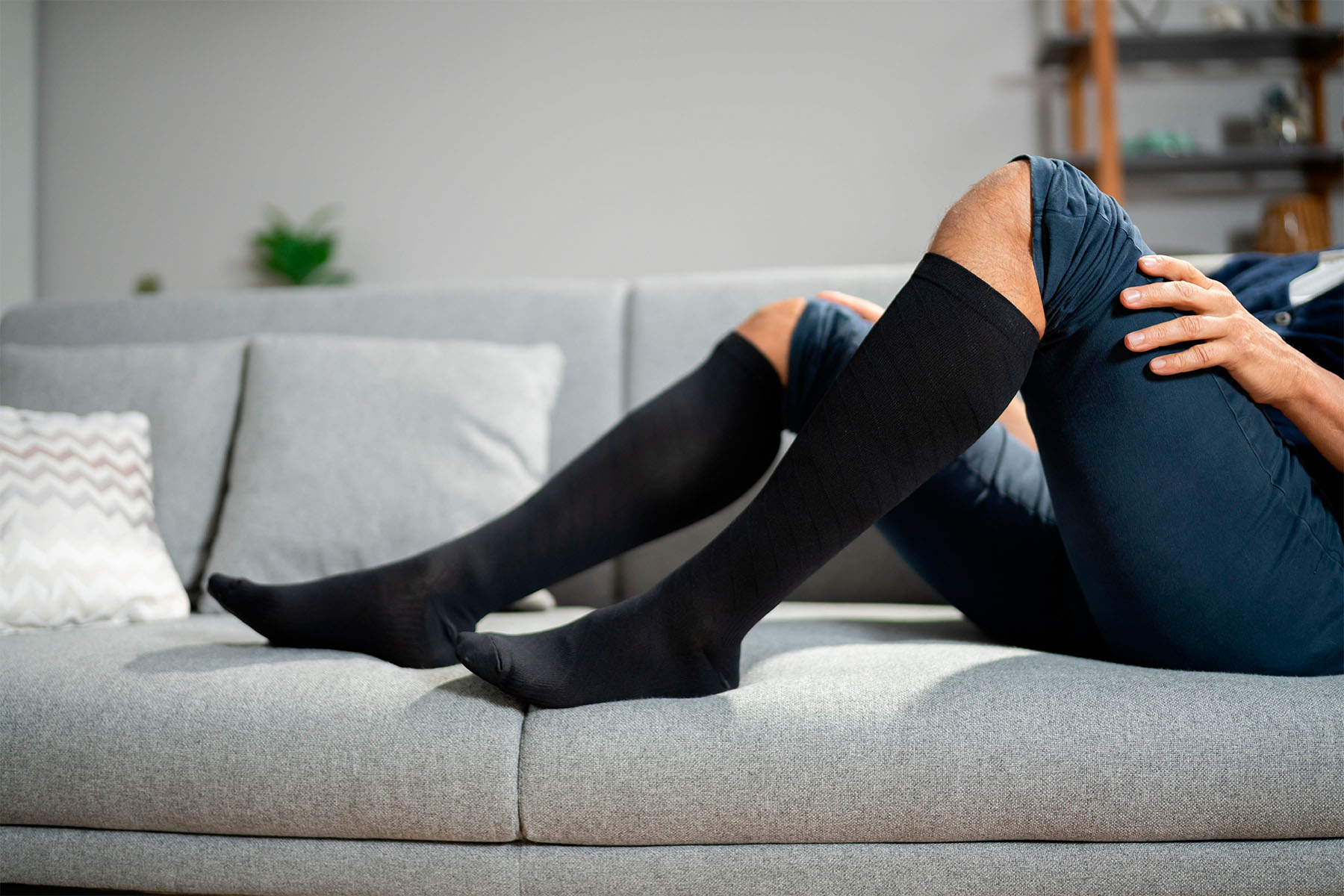
Comfort for Prolonged Sitting or Standing
When you walk or move your legs, the muscles contract, helping to move blood through your deep veins. However, when you sit or stand for a long time, your leg muscles don't contract, increasing the risk of blood clots forming in your deep veins.
Unfortunately, traveling long distances, working desk jobs, and having certain illnesses prevent people from moving their legs regularly. This places them at risk of developing deep vein thrombosis. Graduated compression stockings help reduce this risk by supporting the veins in moving blood through the legs and into the upper body without muscle contractions.
Who Should Use Compression Stockings
Many people wear non-medical compression stockings to comfort and soothe tired leg muscles. However, certain groups of people should wear compression stockings to prevent injuries and treat specific medical conditions.
These include:
- People with circulation issues
- Post-surgery patients
- Individuals with lymphedema
- Pregnant people
- Athletes and active individuals
Types of Compression Stockings
Not all compression stockings are created equal; multiple types serve different purposes.
The most common types of compression stockings include:
- Graduated compression socks: Stockings that apply strong pressure at the ankle, gradually decreasing in intensity as they reach the top of the sock.
- Anti-embolism stockings: Thromboembolic deterrent stockings that apply pressure to the leg, preventing deep veins from developing clots.
- Medical compression stockings: Prescribed garments for individuals with conditions such as lymphedema, chronic venous insufficiency, and varicose veins. These garments have higher grades of pressure than those sold over the counter.
How to Choose the Right Pair
Compression stockings can be customized to meet your needs and maximize comfort. If you're unsure which compression stockings to choose, consider the following.
Compression Levels
Compression levels, also called grades of pressure, denote the amount of pressure the garment applies around the ankle. These grades of pressure are measured in millimeters of mercury (mmHg) and divided into several classes.
They include:
- Class 1 or Low pressure (under 20 mmHg) - Used to treat mild pain and swelling and to prevent DVT due to inactivity.
- Class 2 or Medium pressure (between 20-30 mmHg) - Used to treat varicose veins, mild venous conditions, and pregnancy-related leg swelling. Some athletes use this pressure to aid in recovery.
- Class 3 or High pressure (between 30- 40 mmHg) - Used to prevent blood clots, edema, and severe venous conditions.
Size and Fit
Before choosing a compression stocking, it's important to get accurate measurements. This will help you select a garment that fits sufficiently. Poorly fitted compression stockings may not benefit you and, in some cases, can even cause pain.
Here are a few tips on how to measure your leg for a compression stocking:
- Use a medical-grade pen or marker to create a mark just above your ankle bone.
- Make a second mark just below the knee.
- Measure the distance between both marks using a tape measure (be sure to start at 0). Record this number.
- Place your tape measure at the mark on your ankle and make marks at 5 cm, 10 cm, 15 cm, 25 cm, and 30 cm.
- Next, place your tape measure at the 5 cm mark and measure the circumference. Record this measurement and repeat at 10 cm, 15 cm, 25 cm, and 30 cm.
- Compare these measurements to the garment sizing guide to choose the correct size.
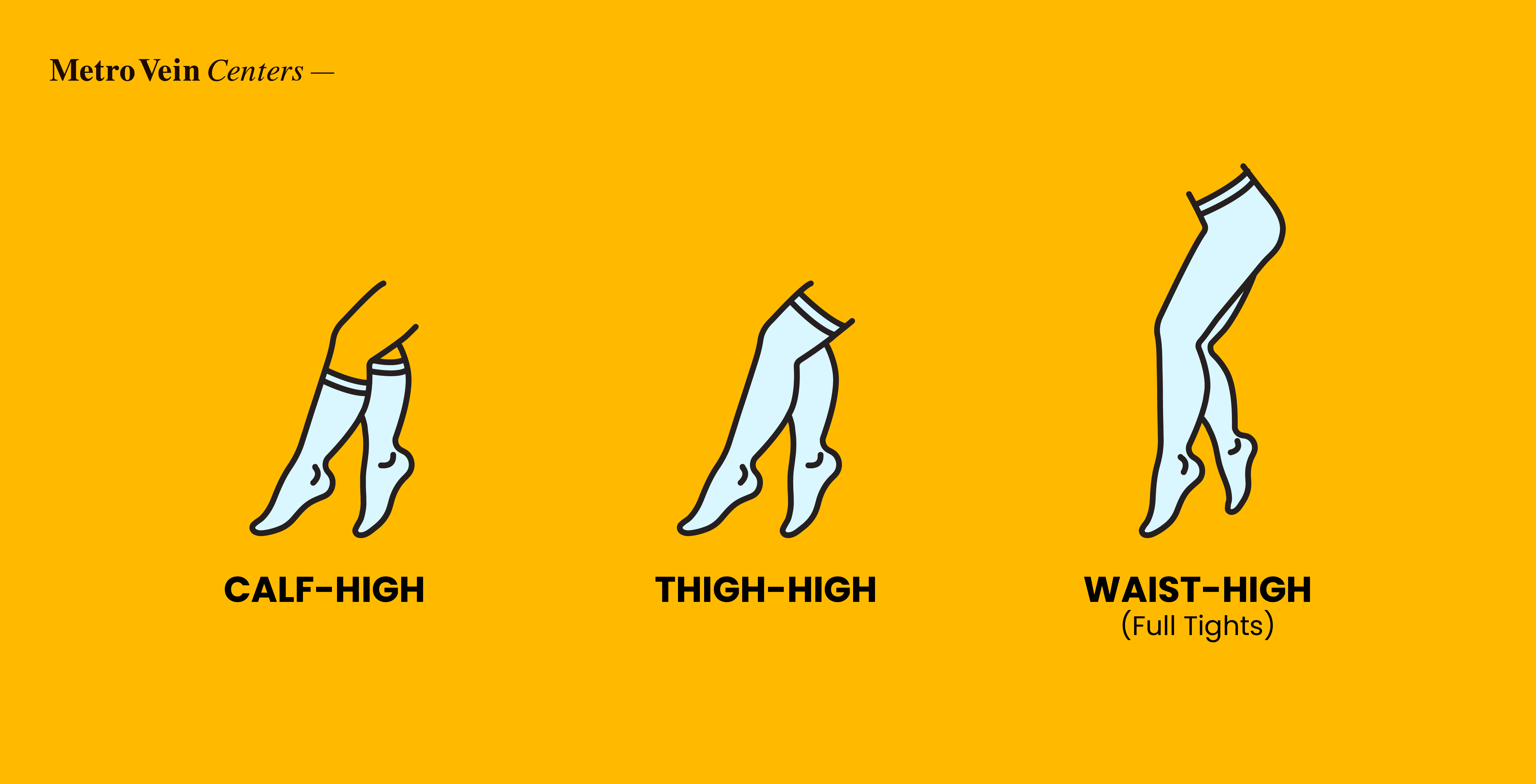
Length
Depending on your physician's recommendation, you might want to choose stockings of varying lengths, ranging from calf-high to full tights. Each size is standard but can be customized to fit precise measurements.
The most common lengths include:
- Calf-high
- Thigh-high
- Waist-high (full tights)
These compression stockings are available in open-toe and closed-toe styles.
Material Types
Compression stockings are crafted from a blend of materials for comfort and durability.
These materials include:
- Cotton: for greater breathability
- Nylon: for added stretch
- Spandex (also called elastane or lycra): for stronger compression
- Polyester: for comfort and less skin irritability
- Copper-infused: for thermal regulation and antimicrobial properties
How to Put On Compression Stockings
For your compression stocking to work effectively, it must fit snugly and reach the point of your leg for which it is designed. To ensure a proper fit, follow this step-by-step guide.
- Scrunch your compression stocking from the opening to the toe.
- Slide your foot in as far as you can.
- Pull the stocking up from the heel, ensuring it covers the entire foot and ankle.
- Continue pulling the stocking up from both sides of the garment, avoiding wrinkles or bunches.
Tips for Easier Application
Compression stockings with stronger compression grades might be difficult to put on. If you have this issue, try following these tips for easier application.
- Lotion your legs before putting on the compression stocking.
- Apply baby powder or cornstarch to your leg before putting on the stocking.
- Use rubber gloves to prevent your nails from scratching your skin.
- Use a stocking donner to help you slide the compression garment over your foot.
Caring for Your Compression Stockings
Compression stockings should be kept clean to minimize the risk of bacterial or fungal growth. While each stocking has specific instructions, the general rule is to wash them in lukewarm water with mild soap. Avoid tumble drying the stockings, as it can cause them to shrink. Instead, after rinsing, allow the stockings to air dry.
At three to six months, you should replace your stocking to ensure adequate compression and quality.
Potential Side Effects and Precautions
It is normal for your compression stocking to feel snug; however, if you experience signs that it is too tight, contact your healthcare provider immediately.
These signs include:
- Discolored skin (blue, black, or red bruising)
- Unusual leg swelling
- Swelling above the compression stocking
- Compression band cutting into the skin
- Numbness or pins and needles
- Sharp pain or aching
If you have a medical condition but were not prescribed compression stockings, consult your physician before wearing them. Compression could worsen the symptoms of certain conditions, leading to severe complications.
These conditions include:
- Diabetes
- Peripheral arterial disease (PAD)
- Congestive heart failure
- Significant skin allergies
- Cellulitis
Remember, compression stockings should be comfortable, but they may take some time to get used to. If you experience significant discomfort while wearing or after removing them, consult a medical professional. You might need to adjust the fit, length, or compression pressure.

Dr. Philip LoPresti
Meet Dr. Philip LoPresti DO, DABVLM, FACS, a board-certified vein specialist and surgeon with over 20 years of experience. Schedule an appointment with him in Queens, NY today.
Meet Dr. Philip LoPresti
Trusted insight from the nationally accredited, board-certified vein doctors at Metro Vein Centers.


